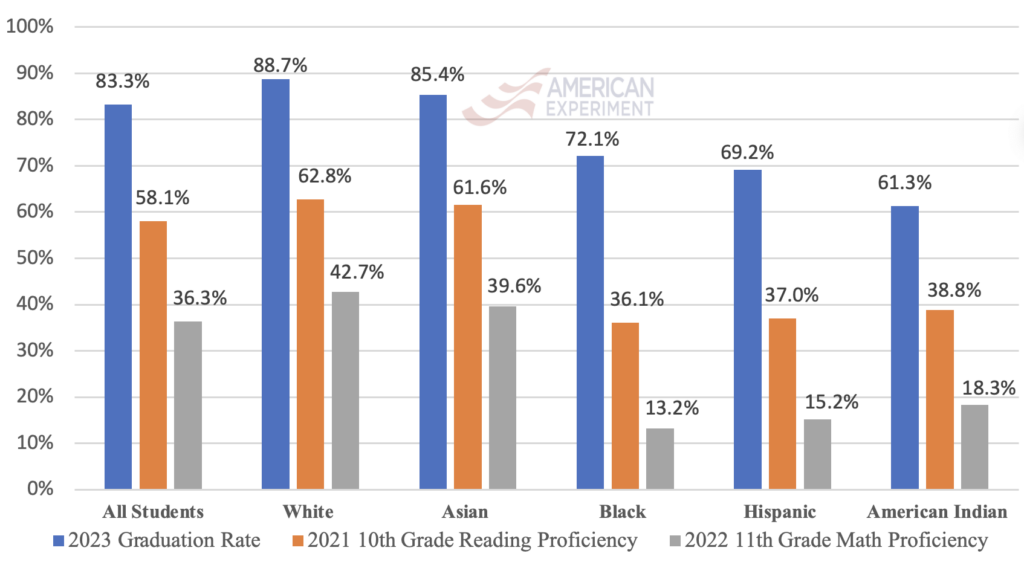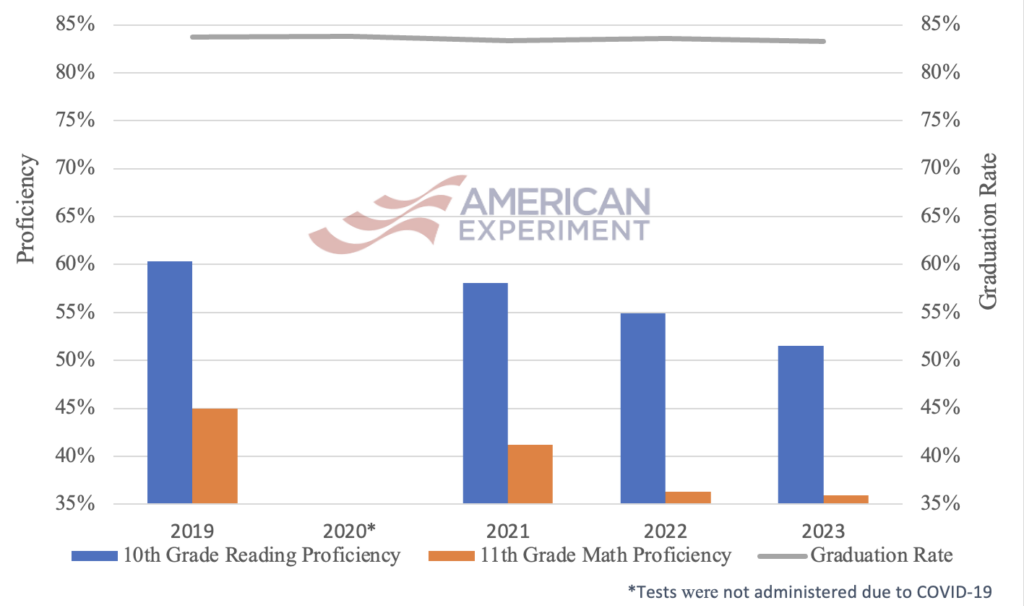Okay, graduation rates haven’t slipped, now for the rest of the story
A couple of weeks ago, I wrote about the Minnesota Department of Education’s release of 2023 graduation data. The department reported a slight decline compared to the 2022 graduation rate — from 83.6 percent to 83.3 percent, or a 0.3 percentage point decrease — but I also shared how KSTP reported that part of the dip “includes students who were incorrectly reported, or not reported as enrolled somewhere else.”
A recent MPR article looked closer at MDE’s data and found that “the state’s published results were flawed and that graduation rates are actually rising,” going from 83.6 percent to 83.8 percent, or a 0.2 percentage point increase. (The graduation rate last reached this high in 2020.)
The MPR article goes into great detail about the graduation rate recalculations, explaining, for example, how incorporating the missing summer graduates from the Minneapolis and St. Paul school districts helped boost the statewide rate. “The 2023 graduation rate should have been applauded as matching the historic high reached in 2020 as the pandemic took hold,” continues MPR.
But nowhere does the article discuss that, despite a fairly steady high school graduation rate over the last several years, high school proficiency has been in a steady decline.
Because high school students take the reading Minnesota Comprehensive Assessment (MCA) in 10th grade and the math MCA in 11th grade, we don’t know exactly how well schools have prepared them academically upon graduation. We can, though, get a sense of their literacy and numeracy skills based on assessment results in previous years. For example, as 11th graders, 36.3 percent of the class of 2023 could do grade-level math.
The chart below shows the 2023 graduation rates (blue bar) broken down by student group and their reading proficiency as 10th graders (orange bar) and their math proficiency as 11th graders (gray bar), as measured by the MCAs.
Minnesota Four-Year Graduation Rates for 2023 and High School Proficiency

This next chart shows the state’s fairly constant four-year graduation rate from 2019 to 2023, paired with high school student proficiency in math and reading, as measured by the MCAs.
Minnesota Four-Year Graduation Rate from 2019-2023 & High School Proficiency

Additionally, Minnesota ACT scores continue to drop, and Minnesota student performance on national assessments is the lowest in 30 years.
But instead of working to strengthen academic accountability, the state is continuing its long trend of removing academic accountability from schools. In 2013, the legislature removed required minimum test scores for a high school diploma. Today, the legislature’s education policy bill removes the requirement for MDE to “report data that compares performance results among school sites, school districts, Minnesota and other states, and Minnesota and other nations.” They also pushed back the release date of student test scores in the fall from September to December.
Rising graduation rates and weakened standards is not just a Minnesota problem — an analysis of American high schools by The Economist suggests “that schools are lowering academic standards in order to enable more pupils to graduate. And the trend is hurting low-performing pupils the most.”
High school graduation is an important milestone, and we should absolutely work toward improving graduation numbers, but we also need to take a hard look at other academic indicators and make sure such “improvement” isn’t because the bar has simply been lowered.